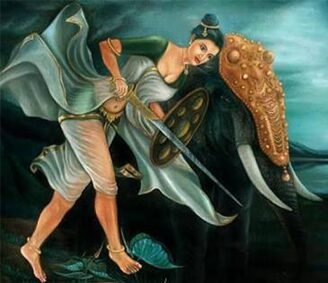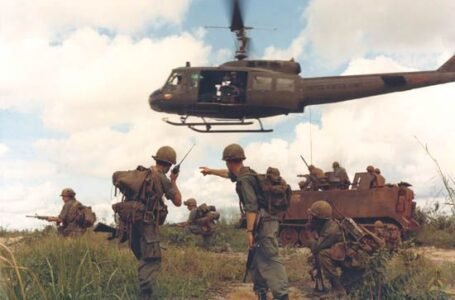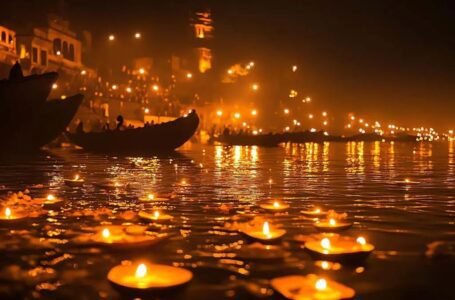Para SF Regiments: Inside India’s Most Elite Fighting Force

-Khirabdhi Tanaya Gour
Para SF Regiments: Inside India’s Most Elite Fighting Force
Few military units evoke the kind of respect and awe that India’s Para Special Forces (Para SF) do. With a reputation built on grit, daring operations, and unbreakable willpower, the Para SF is the tip of the spear for the Indian Army—tasked with the most high-risk, high-reward missions that demand surgical precision.
In this in-depth blog, we explore the origins, structure, historic operations, and the extraordinary officers who shaped this elite force.
The Origins: From Paratroopers to Special Forces
The story of the Para SF begins in 1941, when the British Indian Army raised the 50th Parachute Brigade during World War II, comprising Indian and British troops. This brigade saw action in Burma and Southeast Asia, and its success laid the groundwork for airborne operations in the subcontinent.
Post-independence, India inherited this tradition. The modern Parachute Regiment was formally established in 1952, and its elite wing—the Para Commandos (later known as Para SF)—was created in 1966. Inspired by special forces like the British SAS and U.S. Green Berets, the Indian Army envisioned a unit capable of unconventional warfare, deep reconnaissance, and counter-terrorism.
Birth of the Para SF:
- In 1966, 9 Para Commando was raised—the first dedicated special forces battalion.
- This was followed by 1 Para Commando, 10 Para Commando, and others.
- In 2001, the units were renamed Para (Special Forces) to reflect their specialized role.
Training: The Stuff of Legends
Training for Para SF is among the most grueling in the world. Often compared to the U.S. Navy SEALs and British SAS, aspirants undergo a probation period that can last 90 days to over 6 months, with dropout rates exceeding 80–90%.
Key components include:
- Hell Week: A brutal physical endurance phase.
- Combat Survival Training: Survive in hostile territory without resupply.
- Free-Fall Parachuting: HALO/HAHO jumps at altitudes over 30,000 feet.
- Urban Warfare & Counter-Insurgency: Close-quarter battle drills, house clearing, and hostage rescue.
- Language and Terrain Training: Mastering local dialects and operating in high-altitude, desert, jungle, and maritime environments.
Once trained, a Para SF soldier is capable of deploying in any scenario, anywhere.
Historic Wars and Operations
1. 1971 Indo-Pak War
The 9 Para Commandos were involved in cross-border raids in East Pakistan (now Bangladesh), disrupting supply lines and communication nodes. These were among the earliest special operations in Indian military history.
2. Operation Bluestar (1984)
1 Para Commandos were part of the Indian Army’s controversial operation to flush out militants from the Golden Temple in Amritsar.
3. Operation Pawan (Sri Lanka, 1987–90)
Para SF was deployed during India’s intervention in the Sri Lankan civil war. Despite political and tactical challenges, 10 Para SF conducted deep-strike missions against the LTTE, including risky helicopter insertions into hostile zones.
4. Kargil War (1999)
Para SF units played a covert but critical role, including behind-enemy-lines raids, target acquisition, and intelligence gathering. Their missions remain classified, but veterans describe them as “decisive.”
5. Surgical Strikes (2016)
In response to the Uri terrorist attack, Para SF units crossed the Line of Control (LoC) and destroyed multiple terrorist launchpads in Pakistan-occupied Kashmir (PoK). This was one of the first publicly acknowledged Indian cross-border operations.
6. Galwan and Eastern Ladakh Standoff (2020–21)
Though not officially confirmed, Para SF troops were deployed to high-altitude friction points against Chinese forces, showcasing their versatility in extreme terrain.
Modern Structure: How Para SF is Organized
The Para SF consists of several battalions under the Parachute Regiment, each with its specialization:
Battalion | Specialty |
1 Para SF | Urban Warfare & Counter-Terrorism |
4 Para SF | Mountain Warfare & Counter-Insurgency |
9 Para SF | High-Altitude & Surgical Strikes |
10 Para SF | Desert Warfare & Strategic Reconnaissance |
21 Para SF | Jungle Warfare (drawn from Assam Regiment) |
These battalions report to the Directorate General of Military Operations (DGMO) and can also be assigned to work with RAW, NSG, or even Special Frontier Force (SFF), depending on the mission.
Notable Officers and Legends
Lt. Col. Megh Singh (9 Para)
Credited with raising the first commando unit in 1966, known as “Meghdoot Force”, which later became 9 Para SF.
Major Mohit Sharma (1 Para SF)
Awarded the Ashoka Chakra (posthumous) in 2009 for his heroism in Kashmir while posing as an undercover operative.
Colonel Santosh Mahadik (21 Para SF)
Another Ashoka Chakra awardee, he laid down his life in a fierce firefight in Kupwara, Jammu & Kashmir, in 2015.
Lt. Gen. P.C. Katoch
A pioneering officer who helped shape India’s special forces doctrine. He served as the DG Infantry and was a driving force behind enhancing India’s asymmetric warfare capability.
Culture and Ethos: “Balidan” – The Ultimate Sacrifice
Every Para SF soldier earns the Balidan Badge—a skull and dagger insignia—only after completing full probation and being accepted into the unit. It represents the ethos of sacrifice, and the badge is worn only on the right shoulder.
Their regimental motto is:
“Men Apart, Every Man an Emperor”
And their belief:
“Who Dares Wins.”
Looking Ahead: Challenges and Evolution
India’s Para SF is rapidly evolving to meet hybrid threats—cyber, psychological, and unconventional warfare. Investments in:
- Drones
- Night-vision tech
- Digital battlefield networks
- Specialized aircraft like the C-130J Super Hercules
are making them even more formidable.
However, challenges persist:
- Inter-agency coordination during joint ops.
- Limited strategic autonomy for independent deep-strike missions.
- Retention and mental health, given the constant high-stress environment.
Conclusion: India’s Silent Guardians
The Para SF remains the silent, invisible arm of India’s military might. Their victories are often classified, their missions unnamed. But in the shadows, they are the tip of India’s spear—relentless, lethal, and unyielding.
As global geopolitics becomes more volatile, the importance of a highly-trained, deeply committed force like the Para SF cannot be overstated. They are not just soldiers; they are India’s Balidan Warriors, prepared to lay down their lives without hesitation.
Sources:
- Indian Army Official Records
- Ministry of Defence, India
- Books: “India’s Special Forces: History and Future of Special Forces” by Lt Gen P.C. Katoch
- Interviews with veterans and defense analysts


